Well, I think this picture speaks for itself:
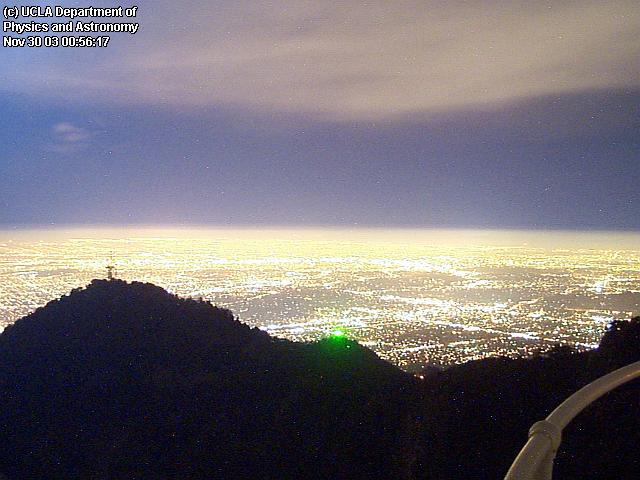
Alignment was difficult - we got lucky just after twilight and then spent quite some time fiddling with binoculars and a night-vision scope before seeing that image. Here's what our end looked like:
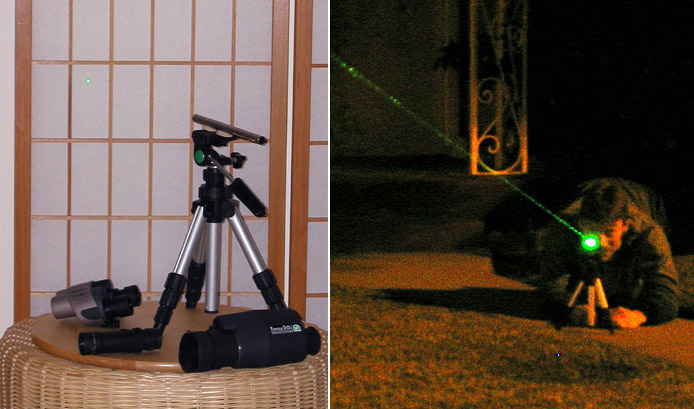
Mount Wilson Laser Tag
|
(from emails of accomplice late in Nov. '03)
|
|
Thanks for running the Mt. Wilson towercam! It's a wonderful
service to the community, and has saved us many a foggy day in Pasadena
(we can check conditions up top before deciding to go hiking ...)
Plus we get reminded to go look at the latest EIT shot ...
Well, I think this picture speaks for itself: |
 |
|
Alignment was difficult - we got lucky just after twilight and then spent quite some time fiddling with binoculars and a night-vision scope before seeing that image. Here's what our end looked like: |
 |
|
Just in case somebody wants to know, the laser pointer is rated at 5mW.
We figure the beam diameter after six-and-a-half miles is about 20 feet
-- there was no chance of harming the camera; and the beam probably
isn't even visible during daylight ...
|
|
(there's me aiming the laser... here's the reply from the hill...)
|
|
>We used a green 532nm green laser
pointer because a 5mW green >the camera seemed to be producing images
about every 6 Thank you for the information! Amazing that such a small laser can accomplish so much! <stuff omitted...> Regarding the Mount Wilson Towercam, it actually does snap an image every 4 minutes but because the program which uploads the image to UCLA is separate from the program that controls the camera, the Web-based image delay can be as much as 8 minutes. Also, client's web browsers do not always reload a fresh image (as they should) adding yet another delay in the apparent spacing of the images. The camera has a set exposure of about 1/2000 second during the day, but at night (4:30 pm these days) it switches over to automatic exposure. This can be as long as 16 seconds on a dark night, but when looking toward the city lights (and with the moon up) the exposure was probably more like 6-8 seconds. I went through the archives and located 4 images that show the laser and I have attached them here. In my humble opinion, the one taken at 00:08 seems to be the best. Larry
|
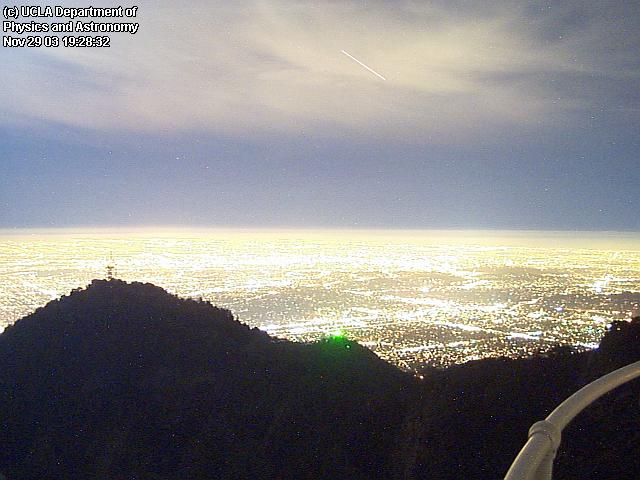 |
|
|
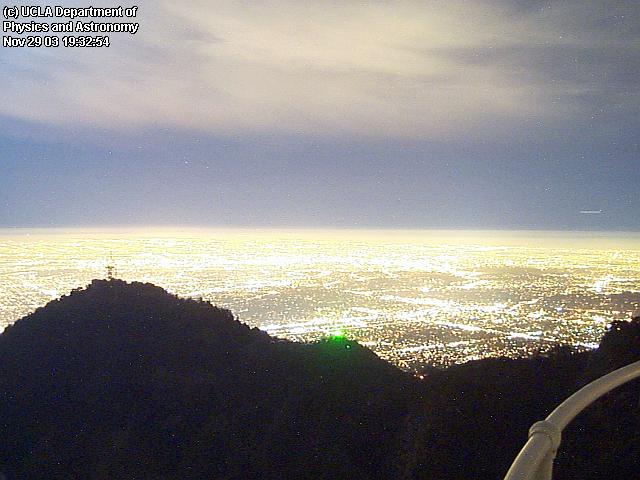 |
|
|
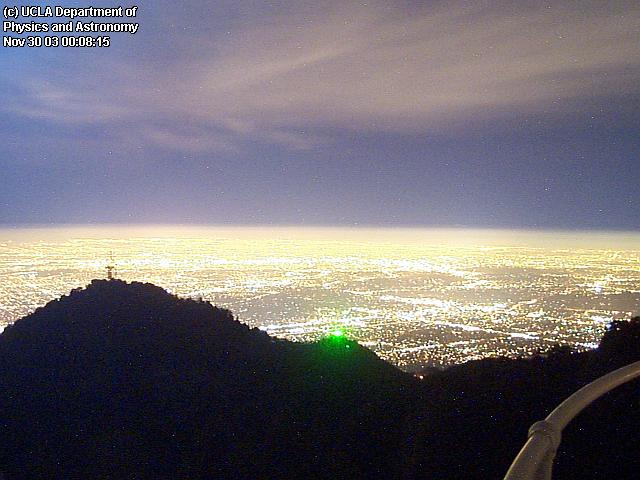 |
|
|
 |